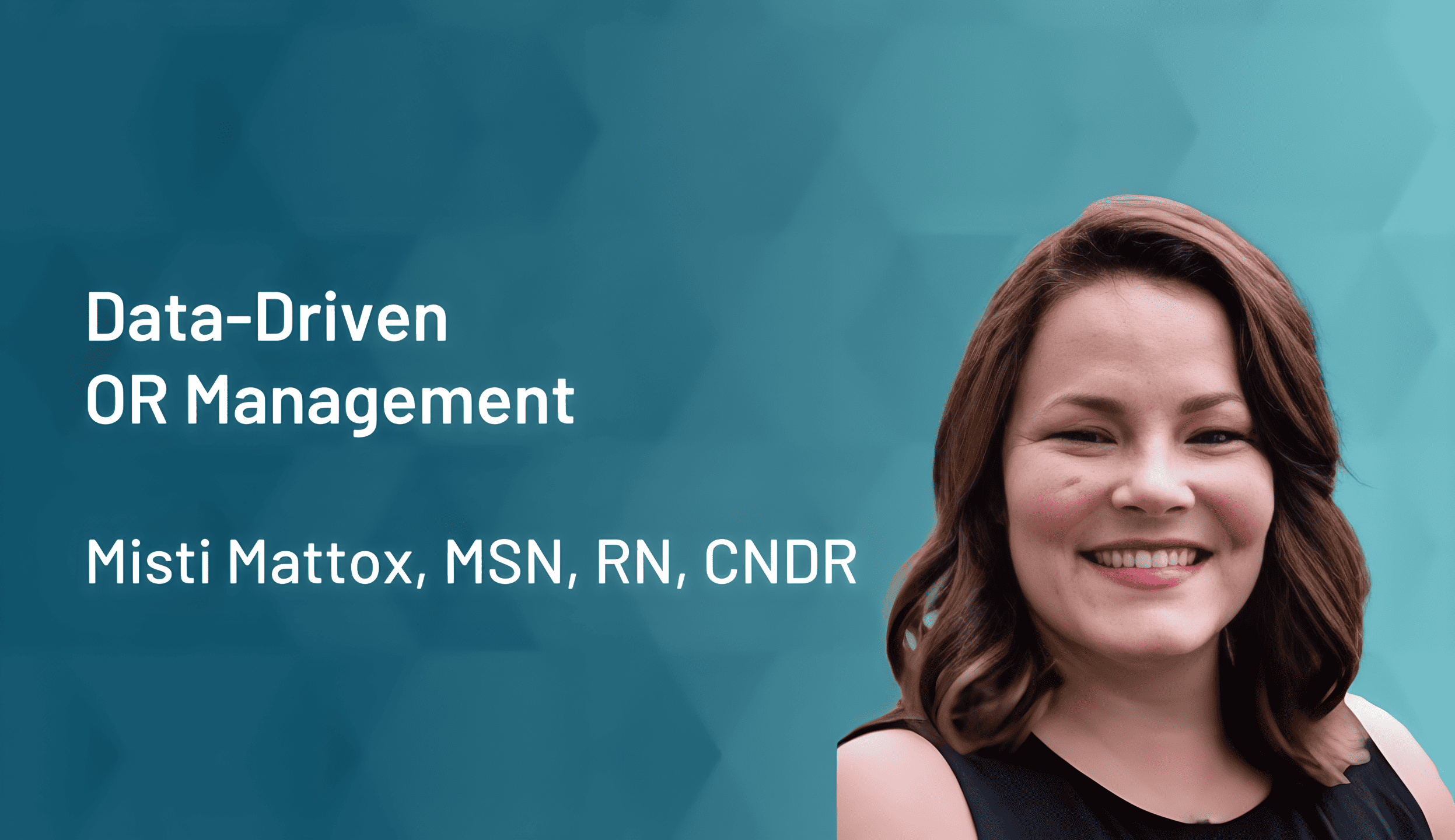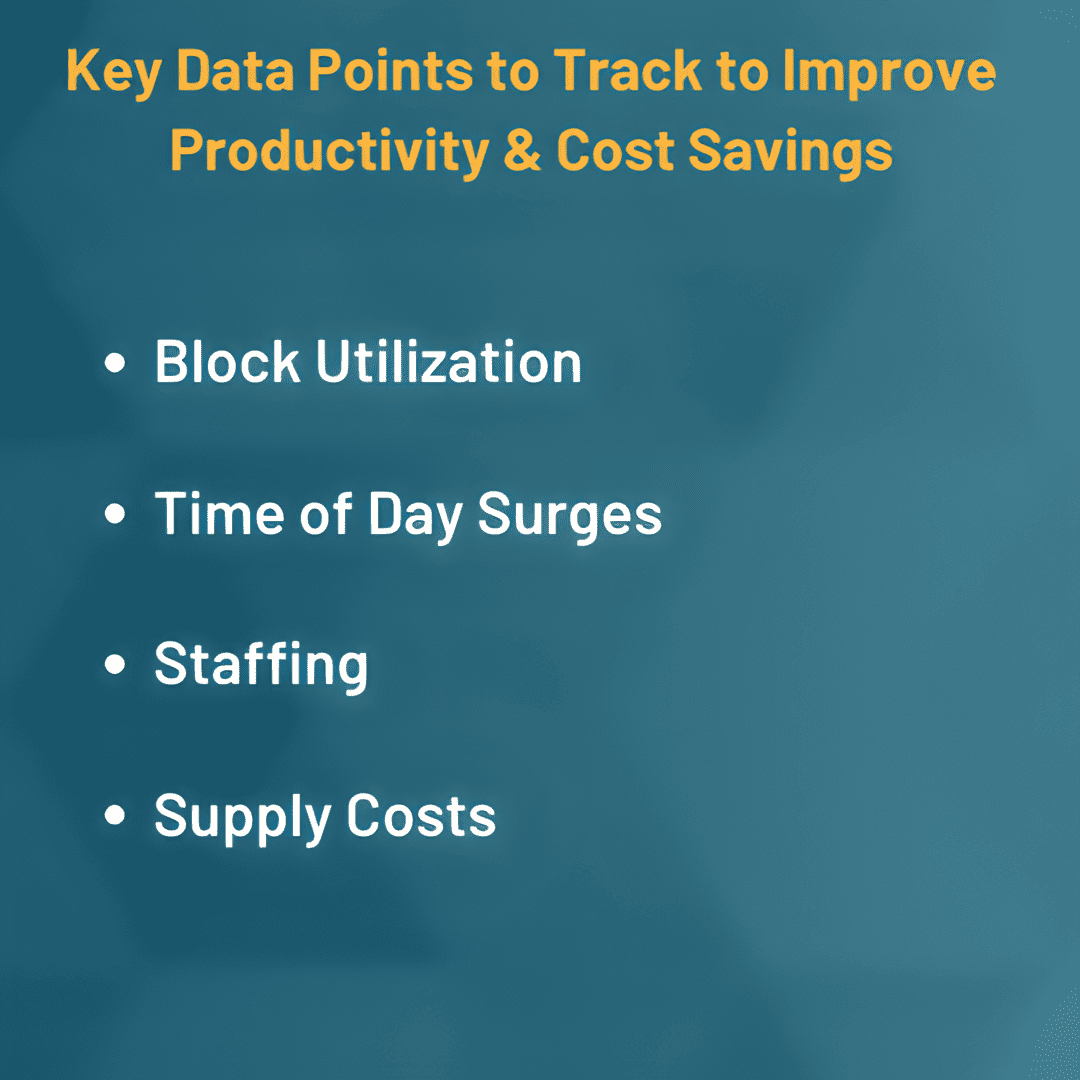
Article
Expert Tips Executive: Surgical Tech Investment – It’s Not Just About The Bottom Line
Read More

Caresyntax Blog
February 7, 2024
The challenges for operating room (OR) managers are universal: improving surgical workflow efficiency while providing high-quality, reliable, safe patient care. And don’t forget—working to ensure profitability. Most ORs have data, the key is knowing what to do with it. There are surgical leaders who are beginning to crack the code. Caresyntax interviewed Misti Mattox, Service Line Administrator at Tallahassee Memorial HealthCare in Florida, on how she got started on her data-driven surgical efficiency journey.
Misti has over 20 years of experience in healthcare. She began as a regular staff nurse, then quickly progressed from coordinator, manager, educator, and director to service line administrator. “I’m a data-driven leader. I’m a numbers person.” But for leaders who aren’t yet experts on optimizing OR data, Mattox shares her tips to get started and which data points are inspiring positive improvement in her team.
OR leadership is constantly focused on productivity and profitability, and to get the critical data insights on areas to improve, they will need to look at data to discover which will have the most impact. Misti uses data to improve everything from scheduling to OR supply costs.

“We work very hard to be efficient with our productivity, as well as with our cost-saving initiatives,” said Misti, “and we do that through data: We use our data to identify block utilization. We use our data to be able to identify volumes and time of day surges. It helps us with our staffing matrices. It helps with being able to negotiate pricing for supplies and products, which are supply chain issues.
“It helps us with our staffing matrices. It helps with being able to negotiate pricing for supplies and products…It helps us negotiate all of that based on our volumes. And that’s all coming from data.”
Misti customizes her data reporting based on individual roles within the organization. She shares First Case On-Time Starts daily with the staff and to improve visibility of those data points, she posts them on the daily management boards. The In-To-Cut and Turnover data is reported out weekly to the staff and monthly to the executive team. She believes it is important to show team members, frontline staff, and executives the data that is most meaningful to them.
On a daily basis, Misti tracks First Case On-Time Starts. They monitor from the time the patient arrives at the hospital for surgery until the time that they have a nurse assigned to them. She also tracks when a physician sees them, when anesthesia sees them, when they go into the OR–every touchpoint. She reviews that data and shares it with the staff. “Because that’s what’s meaningful to them, because that’s what they can impact,” says Misti. “They can’t impact the cost of supplies. They can’t impact block, but they certainly can impact the efficiency from all the touches with the patient.”
Misti also monitors In-to-Cut data: the time the patient rolls into the room until first incision. Although at her facility it is considered unproductive time (their facility absorbs this time as a non-revenue-producing cost. They bill by the surgical minute but pay the staff and overhead cost, regardless of billable time.)
“The staff needs to know that they can impact that [In-to-Cut] time. By being prepared for the case and anticipating the needs of the procedure and the surgeon, they can be highly efficient.”
Turnover data is reported by surgeon, by service line, by room, and by the day of week. “All of the data that Caresyntax gives us, you can drill down to the granular level of the staff who are in the room.” She even uses some of those metrics to encourage healthy competition.
In addition, Misti uses insights into turnover times to help surgeons be more efficient to possibly add procedures into the schedule. “With the extra time, we might be able discharge a total joint while physical therapy is still in-house or get an open-heart to the unit and extubated in a timely manner.
“Efficiency ties into patient safety and the high-quality, reliable care that we can provide just by getting those large procedures completed more efficiently.”
Misti uses data to gain insights into block utilization. This helps her know when a particular surgeon is using their block the way they should, she can give reward them with more time. As an OR manager, Misti knows that the best thing a surgical team can do is be efficient: Get those surgeons and those patients taken care of in the bulk of the day efficiently and leave the afternoon, the evening, and the weekend for those urgent emergent cases that specialized teams are trained for.
The surgical team employed lean methodology to create dashboards along their huddle boards. When it shows a delay for First Case On-Time Start, Misti dives in. Once she learns what happened, she can take action to improve. A typical justification for a delay: the surgeon or patient showed up late or that the labs weren’t drawn in time. They color-coded the boards–red/yellow/green–to rank the impact of delays. “No one wants to be on that list,” Misti explained, “So when they see their name, they will say: ‘Oh, that was not my fault, let me tell you what really happened.’ It makes them really pay attention.
Whatever the reason for the delay, [data] helps her team think about what is needed to improve those results.
“This is data transparency,” Misti explains. She tells her team where they are: the good, the bad, the ugly. She then asks them to let her know if they feel that they are impacting this or not. This can lead to surgeons realizing that they can do better–can help with positioning or have the PA close faster, whatever it is.
“If you use [data] for transparency, reporting, and encouraging the staff to do their part to be more efficient, you get a lot further.”
